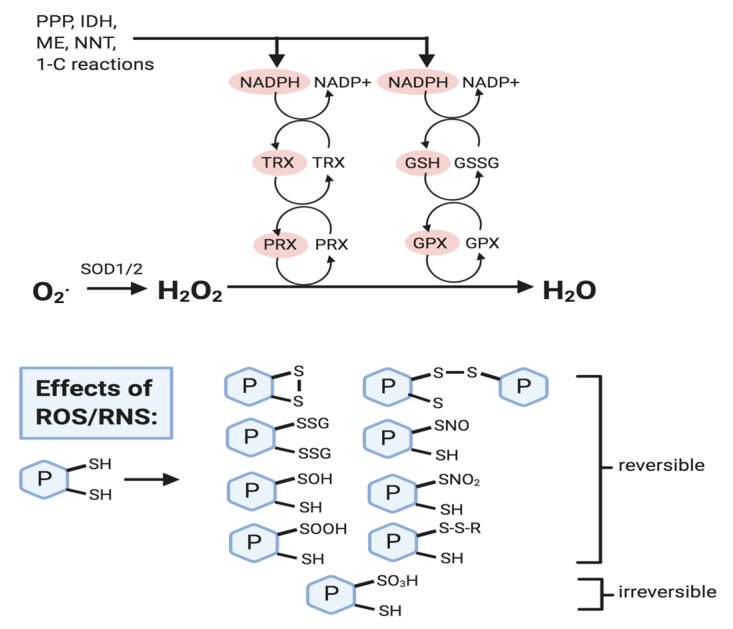Figure 2.
Reactive oxygen species (ROS) removal and effects. NADPH levels are crucial in ROS removal mechanisms and is produced through the pentose phosphate pathway (PPP), isocitrate dehydrogenase (IDH), malic enzyme (ME), nicotinamide nucleotide transhydrogenase (NNT), and one-carbon reactions (e.g., tetrahydrofolate metabolism). NADPH reduces oxidized forms of thioredoxin (TRX) and glutathione (GSSG), and these reduced forms (shown in red) then activate peroxiredoxin (PRX) and glutathione peroxidase (GPX) so that they can reduce H2O2 to water (H2O). ROS (mainly H2O2) and RNS (e.g., nitric oxide) can cause the oxidative modification of protein cysteine thiol residues, most of which are reversible, and serve to protect them from oxidative damage, and to modify protein activity. Refer to text for details.

